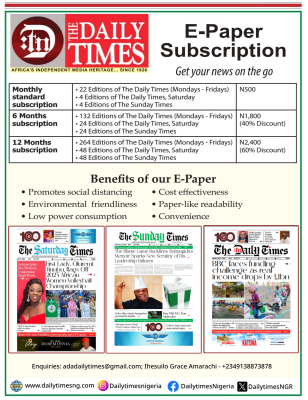Designing Across Borders: Jecinta Fabiyi’s Tech Journey
As Africa’s digital footprint grows, so does it’s talent pool, exporting brilliance across industries and continents. One such talent is Jecinta Fabiyi, a Nigerian-born product designer with over five years of experience shipping user friendly products locally and Internationally.

Jecinta Fabiyi
In this interview, she shares her journey through the tech landscape, her experience working on life-changing products, and what it means to design with purpose in a globally connected world.
Q: Can you tell us about your journey into product design and what inspired you to pursue this career path?
My journey into product design started shortly after I graduated from university. Around that time, I had a friend who was already into product design, and watching them work was genuinely fascinating. It opened my eyes to a whole new world which fuelled my curiosity into how every screen, button or interaction had a purpose.
Learning through that experience made me curious about what happens behind the scenes when building a digital product, and how those events impact people’s everyday lives. I started to pay more attention to the apps and platforms I was using and found myself constantly wondering how they were made, and how they could be better.
READ ALSO: President Tinubu Inaugurates Rehabilitated ICC, Renamed in His Honour
That curiosity quickly turned into a desire to learn more, to understand how design could be used to solve real problems and improve user experiences. That’s what inspired me to take the leap and start my journey into product design. Today, I’ve had the opportunity to work on a wide range of impactful digital products across diverse industries, from information technology to mobility and digital healthcare. Through these experiences, I’ve learned to design with empathy, navigate real-world constraints, and create solutions that meet the needs of users.
Q: How has the tech landscape in Nigeria and West Africa impacted your growth and experiences as a woman in the field?
Honestly, it’s been a beautiful and rewarding journey. Being part of the tech ecosystem in Nigeria has been both inspiring and empowering. Over the years, I’ve seen women stepping into tech roles, building communities, mentoring others, and really owning their space and that energy has been a powerful source of motivation for me.
I’ve had the privilege of meeting and working with incredibly supportive people who believe in the value women bring to tech. From stakeholders to team members to mentors to design communities, the encouragement and sense of belonging have played such a huge role in shaping my growth today.
Q: What has your experience been like designing digital products for users in the European market?
Designing digital products for the European market has been a great learning curve. I had to quickly get familiar with new systems, like how mobility works in Germany and how the healthcare systems are structured, since those are the two main industries I’ve worked in internationally. It pushed me to look beyond just screens and really understand how people live and interact with these services in a different part of the world.
One of the early hurdles was working with German content. We spoke English internally within the organisation, but the actual product had to be localized. At first, it felt like a lot, designing with text I couldn’t fully understand, but I leaned on colleagues who were native speakers and were always willing to offer support, worked closely with content teams, and even started learning a bit of the language on Duolingo, which helped me feel more connected to the work.
Of course, working remotely also meant staying visible in a distributed team and I’m glad I found a good balance. The whole experience didn’t just shape my design skills, it stretched how I think, communicate, and solve problems across different cultures and contexts. And that’s been incredibly rewarding.
Q: You’ve designed for a range of industries throughout your career. How do you adapt your design thinking approach to meet the unique needs and challenges of each industry?
Adapting my design thinking across different industries really comes down to staying curious and putting users first. Every industry has its own set of challenges, expectations, and user behaviors, so I always start by trying to understand what matters most to the people I’m designing for. That means learning about their day-to-day realities, the language they use, the pain points they face, and what success looks like for them.
I also try to immerse myself in the context, whether it’s healthcare, mobility, or info tech, because what works in one space might completely miss the mark in another. I do a lot of listening, asking questions, and digging into research to make sure the solutions we create actually meet their needs.
Collaboration is another big part of the process too. I’ve learned so much by working closely with teammates from different backgrounds, product managers, engineers, data teams, support teams. Their insights has helped shape better, more practical designs.
In the end, design thinking isn’t a one-size-fits-all approach. It’s about staying open, adapting as you go, and constantly learning, so that no matter the industry, you’re creating something that’s not just functional, but genuinely meaningful in each unique context.
Q: How do you manage the dynamics of remote work, especially when working across different continents?
Working across different continents means I’ve had to be very intentional about planning my day, balancing when to be available for collaboration and when to dive deep into focused design work. My alarm and calendar has become one of my trusted companion, reminding me of syncs and meetings so I don’t miss any. Over time, I found a rhythm that really works for me.
Clear communication also plays an essential part. I make it a point to stay proactive with updates, ask questions early, and document my work so everyone stays aligned, even if we’re not online at the same time.
I’d say Remote work has really made me more disciplined and intentional, and it has helped me become better at collaborating across different countries and time zones.
Q: What tools have been most helpful to you, especially when collaborating with teams as a product designer?
I have had to use different collaborative tools but that depends on what tool the company or team prefers. But to mention a few I have used, Figma is at the top of my list, it’s great for real-time design collaboration, sharing feedback, and keeping design work transparent across teams. I also use Confluence or Notion for documentation, project planning, and even keeping personal notes organized. Slack helps me with day-to-day communication, while tools like Jira helps for tracking tasks and aligning with developers and Miro, for workshops, brainstorming sessions, and mapping out user flows together with the team. Of course, Google meet and google calendar for meetings and keeping track of my agenda for each day.
Q: You’ve been in the product design space for some time now, how has your role evolved within the tech ecosystem?
This is such an interesting question because I often take time to reflect on my journey to assess my consistency and growth. Supporting young designers has become an important responsibility I’ve embraced along the way. Beyond my day to day design work, I actively mentor emerging product designers, guiding them through the complexities of the tech industry and helping them shape their careers. I’m proud to be part of vibrant communities where I can share valuable knowledge and resources. For me, it’s about creating real, tangible pathways for others, not just inspiring them, but equipping them with the tools and connections they need to navigate their own unique challenges.
Q: What advice would you give to young designers who aspire to make a global impact through tech?
Start small, but stay consistent. Even volunteer projects can teach you a lot and help build a solid portfolio. Along the way, take time to understand the people you’re designing for and how design supports the bigger goals of a product or business. Never stop improving your craft. Most importantly, don’t be afraid to reach beyond borders, the world is connected now, so reach out, connect, and don’t be shy about sharing your work. Keep learning, stay curious, and believe in the value you offer.
Closing Note
Jecinta Fabiyi’s journey is a testament to the global relevance of African talent in the digital space. Her story inspires a new generation of creatives breaking barriers and designing products that make a difference locally and globally.








